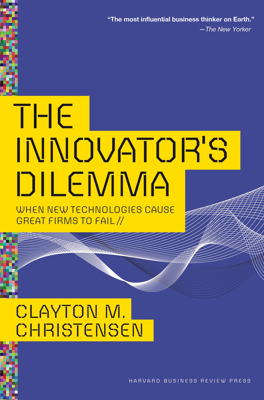Performance Provided, Market Demand, and the Product Life Cycle
Performance Oversupply and Changing Bases of Competition
Performance Oversupply and Market Dynamics
- Performance oversupply occurs when technology advancements outpace market needs.
- This phenomenon creates opportunities for disruptive technologies to emerge and capture market share by offering different valued attributes.
- The shift in performance criteria leads to changes in the basis of competition.
The Disk Drive Industry Example
- By 1988, 3.5-inch drives had sufficient capacity for desktop PCs despite being more expensive than 5.25-inch drives.
- Customers began valuing smaller physical size over capacity, showing a shift in competition bases from capacity to size and later to reliability.
- Once the performance of important attributes meets the market's needs, the focus often shifts to new attributes.
Product Commoditization
- Commoditization occurs when repeated changes in the basis of competition lead to market saturation for all important attributes.
- Products in such conditions see intense price competition and falling profit margins despite possible differentiation.
Product Evolution Models
- Windermere's Buying Hierarchy: Competition shifts from functionality to reliability, convenience, and finally price as market needs are met.
- Geoffrey Moore's Model: Products move from functionality (early adopters) to reliability (mainstream) and then to convenience (late majority).
Characteristics of Disruptive Technologies
- Weaknesses as Strengths: Disruptive technologies often start with features seen as weaknesses in the mainstream market but are valued in new markets.
- Simpler, Cheaper, Reliable: They tend to be simpler, cheaper, and more reliable than established technologies.
Case Studies
Disk Drives
- Smaller drives like 3.5-inch conquered the market by offering valued smallness despite higher costs.
Accounting Software
- Intuit's Quickbooks: Captured market by offering simplicity and convenience over traditional complex accounting software.
Insulin
- Eli Lilly's Humulin: Faced tepid market response despite higher purity because market needs were already met by animal insulin.
- Novo's Insulin Pens: Achieved success by offering a more convenient way to administer insulin.
Controlling Product Competition Evolution
- Companies have three strategic options:
- Ascending Sustaining Technologies: Target higher market tiers and abandon lower ones.
- Catching Successive Waves: Align with particular market tier needs as they evolve.
- Steepening Market Trajectories: Increase demand for new attributes to outperform existing market needs.
Right and Wrong Strategies
- No single strategy is universally best; success depends on understanding market and technology trajectories.
- Strategies must consider customers’ evolving needs and technological advancements to avoid being displaced by disruptive innovations.
Notes
- Discussions highlight the complexity and significance of correctly identifying and adapting to performance oversupply and changing competition bases.
